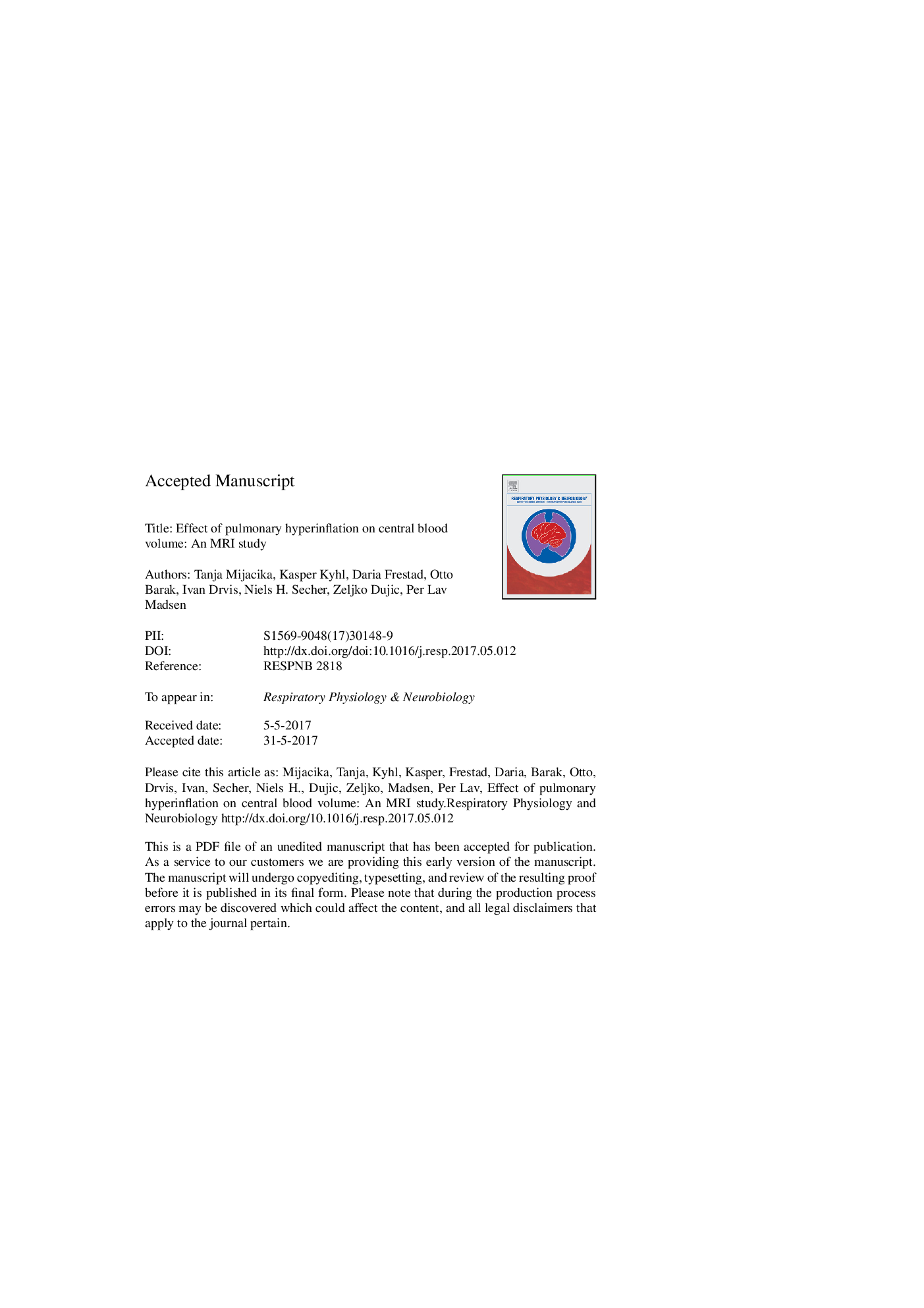| Article ID | Journal | Published Year | Pages | File Type |
|---|---|---|---|---|
| 5594154 | Respiratory Physiology & Neurobiology | 2017 | 24 Pages |
Abstract
Pulmonary hyperinflation attained by glossopharyngeal insufflation (GPI) challenges the circulation by compressing the heart and pulmonary vasculature. Our aim was to determine the amount of blood translocated from the central blood volume during GPI. Cardiac output and cardiac chamber volumes were assessed by magnetic resonance imaging in twelve breath-hold divers at rest and during apnea with GPI. Pulmonary blood volume was determined from pulmonary blood flow and transit times for gadolinium during first-pass perfusion after intravenous injection. During GPI, the lung volume increased by 0.8 ± 0.6 L (11 ± 7%) above the total lung capacity. All cardiac chambers decreased in volume and despite a heart rate increase of 24 ± 29 bpm (39 ± 50%), pulmonary blood flow decreased by 2783 ± 1820 mL (43 ± 20%). The pulmonary transit time remained unchanged at 7.5 ± 2.2 s and pulmonary blood volume decreased by 354 ± 176 mL (47 ± 15%). In total, central blood volume decreased by 532 ± 248 mL (46 ± 14%). Voluntary pulmonary hyperinflation leads to â¼50% decrease in pulmonary and central blood volume.
Related Topics
Life Sciences
Biochemistry, Genetics and Molecular Biology
Physiology
Authors
Tanja Mijacika, Kasper Kyhl, Daria Frestad, F. Otto Barak, Ivan Drvis, Niels H. Secher, Zeljko Dujic, Per Lav Madsen,
